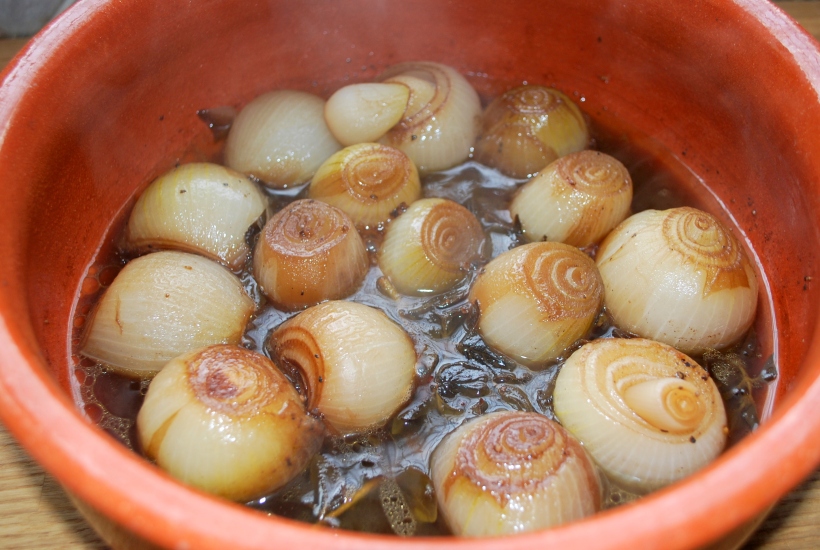In Andalucía many restaurants will offer, as part of their menu, a dish called “carne en salsa”. Literally translated this is “meat in sauce”. In Andalucía this will be, pretty much without exception, pork. The dish will be served as a tapa in tiny terracotta dishes with a small piece of crusty bread, or you can order a media ración (a half portion) or a ración (a full portion). Full and half portions would most likely be served with chips (fries) or perhaps potatoes or rice and main dishes are usually shared with several different dishes ordered and everyone digging in.

This is a loose interpretation of the dish, it wouldn’t usually have potatoes or chorizo included when it’s cooked, so leave them out if you want to be more authentic. If you have an earthenware dish to cook it in, go for it. The gentle cooking in these pots does something good special to the flavour. I used my slow cooker (then warmed it through in my Cazuela to serve), but this can be cooked on the stovetop or in the oven if you prefer.
Ingredients (to serve 4-6 as a main course)
- 1kg pork shoulder diced into bite sized cubes
- 2 fresh chorizo sausages, sliced
- About 500g potatoes, peeled and cubed
- 1 onion, peeled and finely diced
- 3 cloves of garlic, peeled and sliced
- 2 peppers (any colour) diced
- 400g tinned tomatoes
- A pinch of saffron threads or half a teaspoon of turmeric
- 1 tablespoon of sweet pimentón
- ½ teaspoon of hot pimentón (optional)
- About 10 sprigs of thyme and a bay leaf
- Salt and pepper
- 2 large tablespoons of tomato purée
- A glass of red or white wine (about 125ml)
- A good slug of dry sherry (optional)
- 125ml approx of chicken stock (extra if you cook in a conventional oven or stovetop)
- 2 heaped teaspoons of cornflour (optional)
- Flat leaf parsley, finely chopped, to garnish
Put the pork, chorizo, potato, onion, garlic, pepper, tomatoes, saffron (or turmeric), pimentón, thyme and bay leaf into your cooking pot or slow cooker. Season with the salt and pepper and mix.
Mix the tomato purée with the wine, stock and sherry and pour over the pork and vegetables. In the slow cooker cook on high for about 4 hours until the meat is very tender. On the stovetop bring to a gentle simmer and cook, half covered for about 2 hours or until the meat is tender for about 2 hours. Check frequently, you may need to add a little extra stock. In the oven, cook at a medium low heat for about 3 hours, covered, until the meat is tender. Check every 45 minutes and add extra liquid if needed.
When you’re almost ready to serve, if the liquid is too runny for your liking, add two heaped teaspoons of cornflour to a little cold water and stir in. Return the dish to the heat for about 20 minutes (slow cooker or oven) and 5 minutes (stove top) until thickened. Taste and adjust seasoning if necessary, garnish and serve with plenty of lovely crusty bread.




















